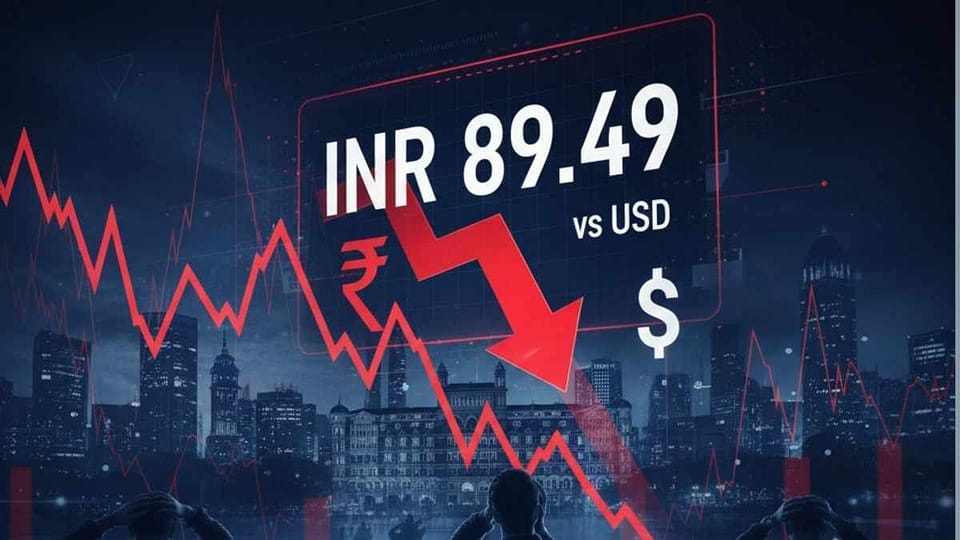In a significant development for the Indian stock market, Foreign Portfolio Investors (FPIs) have pulled out a staggering Rs 31,575 crore from Indian equities in April 2025, driven by global uncertainties sparked by US tariff policies. This massive outflow, reported between April 1 and April 11, has sent ripples across financial markets, raising concerns among investors and analysts alike. In this article, we’ll dive deep into the reasons behind this sell-off, its implications for the Indian economy, and what investors can expect in the coming months. This piece aims to provide valuable insights for anyone tracking market trends.
Understanding the FPI Outflow: A Snapshot
The withdrawal of Rs 31,575 crore from Indian equities marks a sharp reversal from the net investment of Rs 30,927 crore seen in the last six trading sessions of March 2025 (March 21–28). According to data from depositories, this outflow has pushed the total FPI withdrawals in 2025 to Rs 1.48 lakh crore, underscoring the intensity of the sell-off. The primary trigger? Sweeping tariffs imposed by the United States on several countries, including India, which have fueled global market turbulence.
This isn’t the first time FPIs have turned cautious. In February 2025, they withdrew Rs 34,574 crore, and January saw an even larger outflow of Rs 78,027 crore. However, April’s numbers indicate that investor sentiment remains fragile, driven by macroeconomic and geopolitical risks.
Why Are FPIs Selling? The Role of US Tariffs
The US, under President Donald Trump’s administration, has introduced reciprocal tariffs targeting multiple nations, with India facing a proposed 26% tariff on certain goods. These measures, combined with a 10% baseline tariff on all imports and a 25% tariff on automobile imports, have raised fears of a global trade war. Such policies could disrupt supply chains, increase inflation, and slow economic growth worldwide, prompting FPIs to adopt a risk-off approach.
VK Vijayakumar, Chief Investment Strategist at Geojit Investments, explains, “The turbulence in global stock markets following President Trump’s reciprocal tariffs has been impacting FPI investments in India too.” He notes that a clear pattern in FPI behavior may only emerge once the current market chaos subsides.
The US tariffs have already triggered significant selling in American markets, with the S&P 500 and Nasdaq losing over 10% in just two days earlier this month. This volatility has spilled over to emerging markets like India, where FPIs are reevaluating their exposure. Additionally, concerns about stagflation in the US—where inflation rises while economic growth stagnates—are further dampening investor confidence.
India’s Economic Resilience Amid Global Uncertainty
Despite the FPI outflows, experts remain optimistic about India’s long-term prospects. Vinit Bolinjkar, Head of Research at Ventura, highlights that India’s macroeconomic fundamentals remain robust. “The ongoing sell-off in Indian equities is driven by macro and geopolitical risks led by US tariffs,” he says, “but robust domestic demand and ongoing trade realignment continue to position India favorably for the long term.”
India’s economy is projected to grow by 6% in FY26, even in an unfavorable global scenario. This growth potential, coupled with expectations of better corporate earnings in FY26, could lure FPIs back once global uncertainties ease. Vijayakumar adds, “In the medium term, FPIs are likely to turn buyers in India since both the US and China are heading for an inevitable slowdown due to the trade war.”
Beyond Equities: Debt Market Withdrawals
The FPI exodus isn’t limited to equities. In April, FPIs withdrew Rs 4,077 crore from the debt general limit and Rs 6,633 crore from the debt voluntary retention route. This cautious approach reflects a broader trend of risk aversion among foreign investors. However, the decline in the US dollar index to 102 could eventually favor capital flows into emerging markets like India, offering some hope for recovery.
Historical Context: A Pattern of Volatility
To put April’s outflows in perspective, let’s look at recent trends. In 2024, FPIs were net buyers in Indian equities for most months, except January, April, and May, with total inflows of just Rs 427 crore—down sharply from Rs 1.71 lakh crore in 2023. The heavy selling in early 2025 mirrors the outflows seen in 2022, when aggressive rate hikes by global central banks led to a net withdrawal of Rs 1.21 lakh crore.
The current sell-off, while significant, is not unprecedented. For instance, October 2024 saw a record outflow of Rs 94,000 crore, driven by high valuations in India and attractive opportunities in China. What sets April 2025 apart is the specific catalyst—US tariffs—combined with ongoing concerns about global economic stability.
Impact on Indian Markets: A Mixed Picture
The FPI withdrawals have contributed to market volatility, with the BSE Sensex falling over 6% year-to-date as of March 2025. However, domestic institutional investors (DIIs) have provided a cushion, buying stocks worth Rs 34,000 crore in April’s secondary market. This resilience has helped Indian benchmark indices hold up better than some Asian peers, many of which have entered bear market territory.
Kotak Institutional Equities notes that India’s low export-to-GDP ratio and dominance of domestic sectors in market earnings make it less vulnerable to global trade disruptions. Moreover, a recent pause on reciprocal tariffs for 90 days, announced by the US, has sparked a rally in Indian markets, with benchmark indices surging 2.4% on April 11.
What Should Investors Do?
For retail investors, the current market environment may seem daunting, but it also presents opportunities. Here are some strategies to consider:
- Focus on Quality Stocks: With FPIs selling heavily in sectors like financial services, which still offer attractive valuations, investors can look for fundamentally strong companies at discounted prices.
- Stay Diversified: Spread investments across sectors to mitigate risks from global volatility. Defensive sectors like IT and consumer goods may offer stability.
- Monitor Global Cues: Keep an eye on US tariff developments and their impact on global markets. A resolution or easing of trade tensions could trigger a reversal in FPI flows.
- Long-Term Perspective: India’s growth story remains intact. Investors with a horizon of 3–5 years can capitalize on market dips to build their portfolios.
Looking Ahead: Will FPIs Return?
While the immediate outlook remains uncertain, experts believe FPIs will eventually return to Indian markets. The pause on US tariffs for countries like India, combined with India’s strong economic fundamentals, could act as a catalyst. As global markets stabilize and corporate earnings improve, India’s growth potential is likely to attract foreign capital once again.
For now, investors should brace for volatility but remain focused on the bigger picture. India’s ability to navigate global challenges, coupled with its domestic strengths, makes it a compelling destination for long-term investment.
Conclusion
The withdrawal of Rs 31,575 crore by FPIs from Indian equities in April 2025 reflects the broader uncertainty gripping global markets. US tariffs, geopolitical risks, and fears of a trade war have driven foreign investors to pull back, but India’s economic resilience offers hope. By staying informed and strategic, investors can navigate this turbulence and position themselves for future growth.
Sources: Business Standard, Economic Times, Times of India, Moneycontrol, The Hindu Business Line
Discover more from News Diaries
Subscribe to get the latest posts sent to your email.



